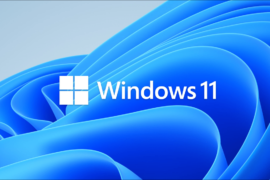- The contextual menu of Windows 11 presents some visual modifications with respect to the one of Windows 10
- Although there are not as many controversies about it as with the update of the taskbar, the truth is that the questions about how to return to the contextual menu of Windows 10 are multiplying
- Luckily, we have the possibility to recover the context menu of Windows 10 in just a few seconds
Windows 11 is the latest version of Windows, an update that hasn’t brought as many new features as we would have liked, but still manages to give us a fresh look in many essential ways. Now, if for some reason the arrangement of the elements does not please you, or you do not get used to it, you can still go back to Windows 10 context menu in Windows 11. It is a trick that will probably interest many.
Indeed, the truth is that most users seem to be satisfied with what Windows 11 offers them in aesthetic terms. Anyway, it never hurts to know what the steps are to return to that Windows 10 context menu that we have become accustomed to in recent years, and which is still very current.
So, if you are among the people who prefer, at least for now, to return to that old but reliable Windows 10 context menu, in the following lines we are going to show you all the steps you should take.
What are the differences between context menus in Windows 10 and 11?
As we said in the previous paragraphs, with Windows 11 Microsoft established a new context menu which follows the updated Fluent design language. Comes in a minimalist design, has rounded corners, a transparent user interface, and design elements that follow the mobile interface. Not bad, it’s true.
In the image below you can see some of the most outstanding differences between both context menus. You will see, for example, that when we want to perform actions involving third party programs, the new context menu becomes especially useless. We lose some of the basic functions at first glance.
If to that we add that Microsoft has also eliminated fundamental options on a day-to-day basis, such as cut, copy, paste, etc., and has moved them to the top of the contextual menu, then there are already more than enough reasons to pretend to tell you goodbye to the new context menu, and use the old, more reliable one.

How to recover Windows 10 context menu step by step
When it comes to recovering the contextual menu of Windows 10 step by step there is more than one tutorial that could give you this solution, However, we have decided to keep the simplest of them, to make things easier for readers.
And how are we going to achieve it? On this occasion, thanks to a third-party app, how could it be otherwise. Tired of Microsoft’s intervention, a group of developers launched the Winaero Tweaker app.
- Download Winaero Tweaker for free from this link
- Extract the ZIP file and run the internal EXE file, installing the software
- Open the application, and go to Windows 11 in the left pane, and then Contextual Menus
- There you can activate a check box on the right side, to obtain classic context menus
- Below you will see the option to Restart the explorer, which you have to click to save the changes
- From that moment, when you right-click on any element, you will have the usual context menu
And how to re-enable the context menu of Windows 11?
One of the ways to enable the context menu is to reset Windows 11 to factory settings, although you can also enable it again without affecting your Redmond operating system customizations.
In the software Winaero Tweaker you can do it from “Reset this page to defaults”. Again, when you do, you will need to save your changes for them to take effect.




